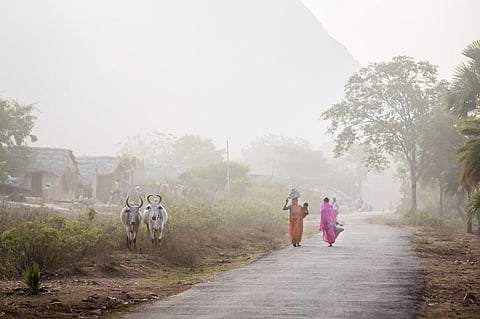

The average concentration of particulate matter 2.5 (PM2.5) in the cities of eastern India was the same as that in the cities of Delhi-NCR in the winter of 2021-22, according to a new report.
Parsed regionally, eastern India was over three times as polluted as southern India and 22 per cent more polluted than northern India from October 15, 2021 to February 28, 2022, the analysis showed.
The report was published by the Centre for Science and Environment (CSE), a Delhi-based non-profit. The analysis was based on real-time data from 326 official stations across 161 cities in 26 states and Union territories, displayed on the official website of the Central Pollution Control Board.
North India is notorious for its winter air pollution, caused mostly by stubble burning between crop cycles.
New hotspots
During the study period, air quality in Bihar was particularly unhealthy, with six of its cities featuring in the top 10 most-polluted cities this winter, the analysis showed. Siwan in Bihar topped the list this winter, with a seasonal average of 187 microgram per cubic metre (ug/m3).
The smaller cities of Bihar were found to be more polluted than the big cities in Delhi-NCR during the months for which data was studied.
The results of the study demonstrated how the winter pollution challenge is not limited to mega cities or to one specific region, said Anumita Roychowdhury, executive director, research and advocacy, CSE.
Quicker reforms and action in key sectors of pollution such as vehicles, industry, power plants and waste management are required “to bend the annual air pollution curve and daily spikes”, she added.
Hisar in northern Haryana was the only city in the top 25 outside the sub-regions of Bihar and NCR, according to the report.
Top 25 most-polluted cities
Mega cities are not the most polluted in any of the regions and the smaller and upcoming cities are becoming pollution hotspots, said Avikal Somvanshi, programme manager, Urban Data Analytics Lab, CSE. “This is even more evident in the winter peak daily pollution data.”
Air pollution was, however, more severe in NCR. The research paper noted:
NCR cities completely dominated the list of most polluted cities, with significantly worse 24-hour averages compared to the rest of the country. Ghaziabad witnessed the worst peak (24-hour average) among all the cities this winter, with a PM2.5 level of 647 ug/m3 (almost 11 times the Indian standard of 60 ug/m3).
The winter of 2021-22 was less polluted than the preceding one, the researchers observed. “Air quality on an average was 12 per cent cleaner this winter compared to the previous winter, based on an average of 136 cities that have valid daily PM2.5 concentration data for over 75 per cent of days of both winters (15 October to 28 February),” the report stated.
Cities in north India, on an average, recorded 11 per cent lower PM2.5 level this winter, according to the analysis. “But the improvement in Delhi-NCR was smaller — just about 8 per cent.”
Delhi-NCR also saw a marginal increase in the average peak 24-hour pollution, the report added.